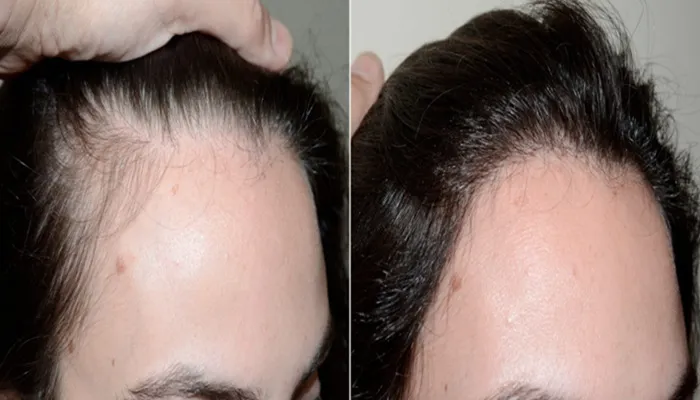Hairline transplants have become a popular solution for individuals seeking to address hair loss and restore confidence. One of the most common questions patients have is whether hairline transplants are permanent. Understanding the permanence of hairline transplants and the factors influencing their longevity is crucial for making informed decisions. This article will provide a detailed exploration of the permanence of hairline transplants, the techniques used, and how to maintain optimal results.
Understanding Hairline Transplants
What Is a Hairline Transplant?
A hairline transplant is a surgical procedure that involves relocating hair follicles from a donor area (usually the back or sides of the scalp) to the recipient area where hair loss has occurred. This procedure aims to create a more natural-looking hairline and restore hair density in areas affected by balding or thinning.
How Is a Hairline Transplant Performed?
Hairline transplants are typically performed using one of two primary techniques: Follicular Unit Extraction (FUE) and Follicular Unit Transplantation (FUT). Both methods involve extracting healthy hair follicles from the donor area and implanting them into the recipient area. The choice of technique depends on various factors, including the extent of hair loss, the patient’s preferences, and the surgeon’s expertise.
Why Are Hairline Transplants Permanent?
Hairline transplants are considered permanent because the hair follicles used in the procedure are taken from areas of the scalp that are genetically resistant to hair loss. These follicles retain their resistance to hair loss even when transplanted to a new location. Once the transplanted follicles take root in the recipient area, they continue to grow hair for a lifetime.
Factors Influencing the Permanence of Hairline Transplants
Surgeon’s Skill and Experience
The skill and experience of the surgeon performing the hairline transplant play a crucial role in the permanence of the results. An experienced surgeon can ensure proper graft harvesting, preservation, and placement, which directly impacts the survival rate of the transplanted hair follicles. Choosing a surgeon with a proven track record of successful outcomes is essential for achieving long-lasting results.
Quality of Donor Hair
The quality, thickness, and density of the donor hair significantly influence the longevity of hairline transplant results. Stronger, healthier donor hair typically leads to more durable and natural-looking outcomes. Factors such as genetics, age, and overall health can affect the quality of donor hair, making a thorough pre-surgery evaluation essential.
Post-Operative Care
Proper post-operative care is crucial for ensuring the best possible results from a hairline transplant. Following the surgeon’s instructions for aftercare can help minimize complications and promote optimal healing. This includes avoiding activities that could dislodge the grafts, protecting the scalp from sun exposure, and using prescribed medications to support hair growth.
Medications and Treatments
To maintain the long-term results of a hairline transplant, ongoing care may be necessary. Medications such as finasteride and minoxidil can help prevent further hair loss and support the health of both transplanted and existing hair. Additionally, treatments like PRP (Platelet-Rich Plasma) therapy can enhance hair growth and improve overall scalp health.
Timeline for Hairline Transplant Results
Immediate Post-Operative Period (0-4 Weeks)
In the first few weeks after a hairline transplant, patients may experience some shedding of the transplanted hair. This is a normal part of the healing process and does not indicate failure of the procedure. The scalp will be sensitive during this period, and proper aftercare is essential to ensure optimal healing.
Early Growth Phase (4-6 Months)
Around four to six months after the procedure, new hair growth will begin to appear. The transplanted follicles will enter the anagen (growth) phase, and patients will start to see visible results. At this stage, the hair will be fine and may not yet match the thickness of existing hair.
Continued Growth and Maturation (6-12 Months)
From six to twelve months post-surgery, the transplanted hair will continue to grow and thicken. By the end of the first year, most patients will achieve significant hair density and a natural-looking hairline. The results at this point are considered permanent, although ongoing care is still important to maintain the health of the transplanted hair.
Conclusion
Hairline transplants are considered a permanent solution for hair loss, with transplanted hair follicles continuing to grow for a lifetime. The permanence of the results is influenced by factors such as the surgeon’s skill, the quality of donor hair, and proper post-operative care. By choosing an experienced surgeon, following aftercare instructions, and maintaining ongoing care, patients can enjoy long-lasting and natural-looking results from their hairline transplant.
If you are considering a hairline transplant, consult with a qualified specialist to discuss your options and determine if this procedure is right for you. They can provide personalized advice based on your individual needs and help you achieve the best possible outcomes.
Related topics:
- Are Hair Transplant Results Permanent?
- Is Hair Transplant Permanent? Knowing Pain and Longevity
- Is Hairline Transplant Permanent? A Deeper Look


